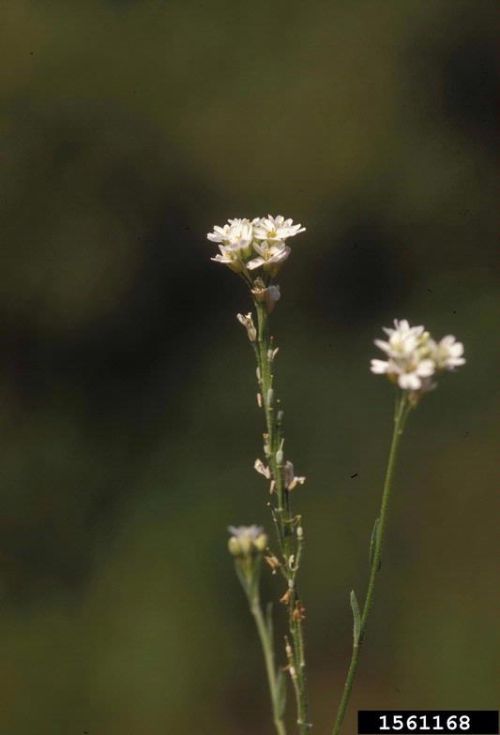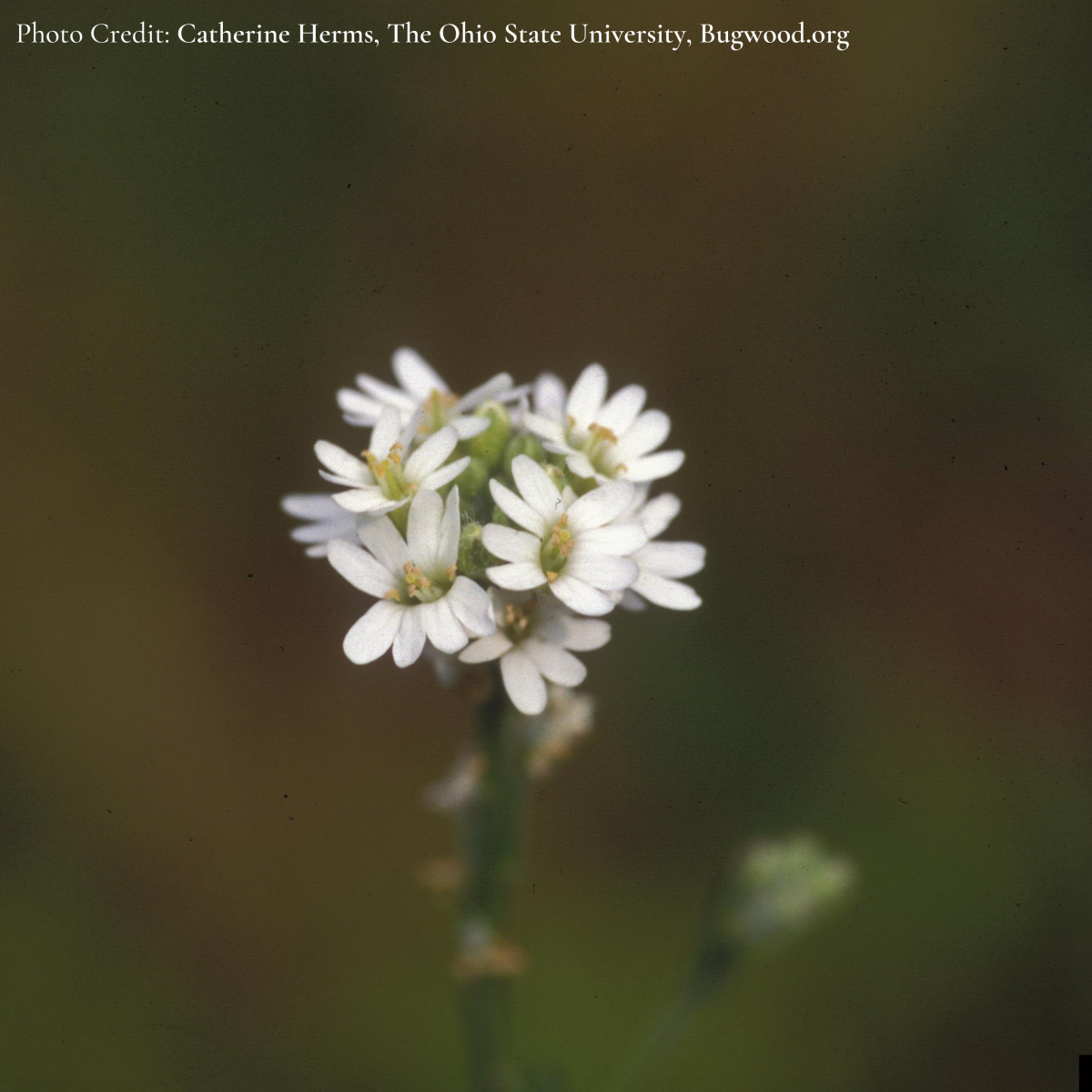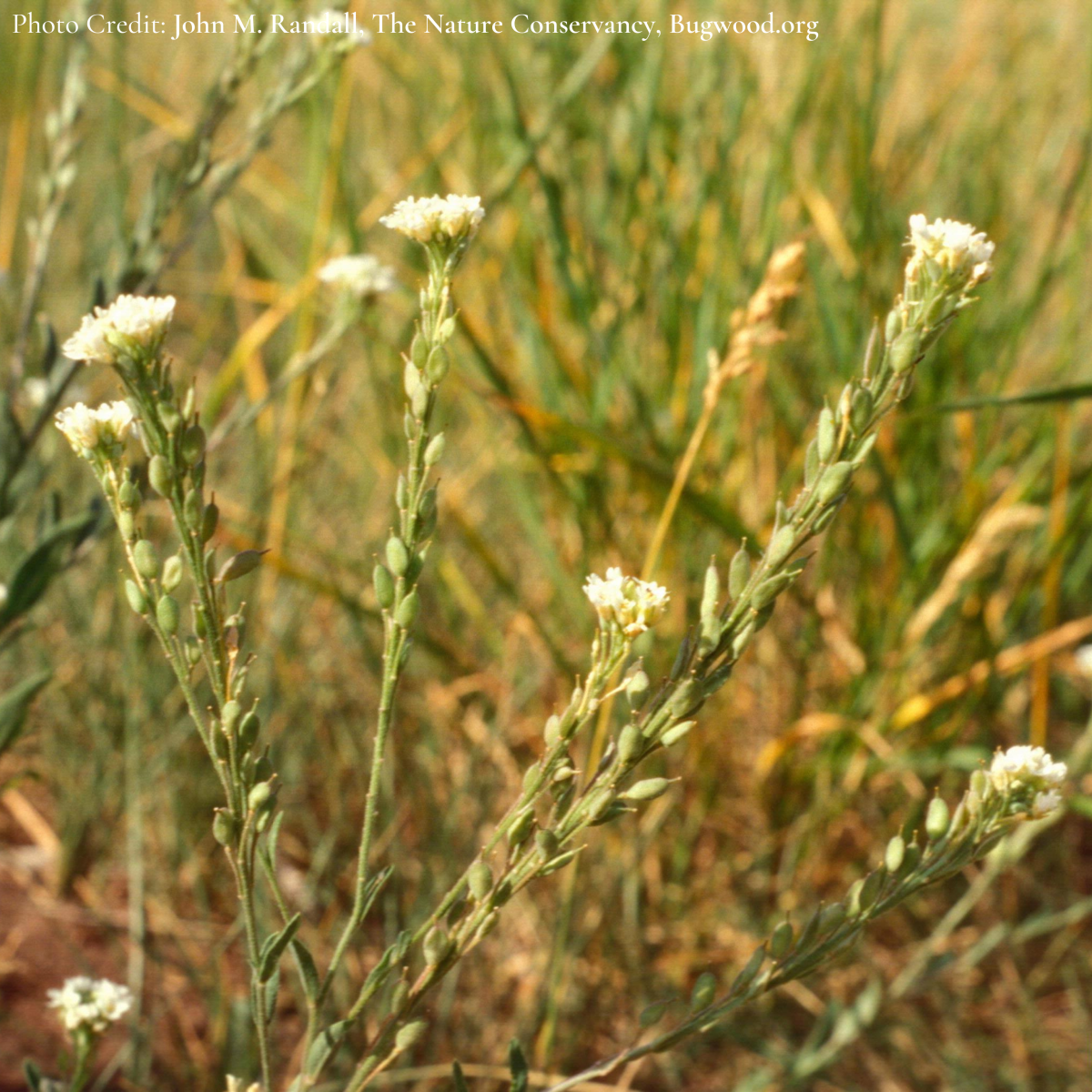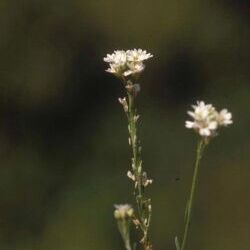
Priority: Contain
General: Erect, branched plant that is poisonous to horses.
Height: Grows between 0.3 and 1.1m tall.
Flowers: Clusters of small white flowers that form at the top of the stems. They are 4-6mm wide with deeply notched petals.
Leaves/Stems: Stems are branched and covered in small star-shaped hairs. Leaves are grey with the same hairs. Leaves at the base of the plant have short stalks, 3-5cm long. Leaves at the top of the plant face upward along the stem.
Root: Slender taproot.
None
Field Chickweed (Cerastium arvense) is a BC native plant.
Differences: Field Chickweed only grows between 5 & 40cm and is found in subalpine or rocky environments.
Where did it come from? Introduced from Eurasia.
Where does it grow here? Found commonly in dry sandy or gravely soils. It grows in disturbed habitats including roadsides, fields and pastures.
Reproduction: By seed only.
When does it grow, flower & seed? Sprouts March-April. Flowers May-October. Seeds throughout the flowering season until November.
Spreads By: Roadside activities like mowing and grading can spread this plant. Seeds can be moved in contaminated hay.
Plant Type: This plant has been known to act as a annual or perennial but commonly referred to as a biennial. It can over winter as a rosette and bolt in the spring.
- Toxic to horses. Can cause fever, limb edema and laminitis (inflammation inside the hoof) if eaten.
- Hoary alyssum can contaminate hay crops reducing quality and forage value.
- Review your property regularly for this species.
- Treatment Remove small patches before it flowers & sets seed. Manual treatment including hand pulling and digging can successfully remove small patches.
- Cover bare patches or disturbed soil by planting or seeding with non-invasives. This plant flowers and produces seed for many months so it is important to create a competitive plant layer to prevent new plants from growing.
- Check areas where you have removed invasives for any new plants that year and in future growing seasons.
- Dispose of invasive plants responsibly. Bag them for disposal at the local landfill. Composting and burning are not recommended.
- Contact LRISS for specific treatment recommendations.
Southern Interior Weed Management Committee. 2016. Invasive Plants of the Southern Interior BC. 86pgs.
E-Flora BC: Electronic Atlas of the Flora of British Columbia.
Okanagan Invasive Species Online website.
Photo Gallery


